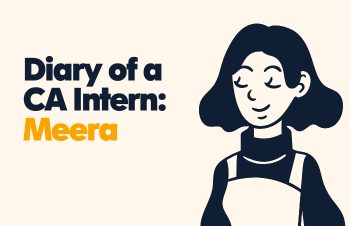In the second guest blog post from Joshua Graff UK Country Manager & Senior Director, LinkedIn EMEA, Joshua talks about how you can use LinkedIn to get ahead in your career.
In my last Creative Access blog I talked about the need for better diversity in the creative industries – a move that isn’t just the right thing to do, but one that also contributes to business success.
At LinkedIn we help people all over the world succeed in their professional lives, regardless of their background.
With 400 million members across the world, and 19 million in the UK alone, LinkedIn is an invaluable tool that allows people to unlock professional opportunities by showcasing their skills to the right people and companies.
It also helps people to be better at the job they have now, as they are exposed to content and conversations about their industry, along with the skills and experience needed to move them on.
Having a strong LinkedIn profile doesn’t have to be difficult and a few simple steps could help you land that dream job or perform better in your current one. Here are my seven tips for using LinkedIn:
- Create a profile (and take pride in your online appearance)
If you haven’t got a LinkedIn profile, get one. Getting started is easy – LinkedIn guides you through the setup and prompts to you add a photo, your current position, past positions and your education.
If you already have a profile, make sure it looks smart and displays all of your experience accurately. Completed profiles are far more likely to be viewed by potential employers. Adding a profile picture gives a personal touch and makes your profile 14 times more likely to be seen – just make sure you keep it professional.
- Start building connections
Developing a strong network is key. By connecting with at least 50 trusted contacts you will start to see the effects of having an online network and increase your chances of getting in touch with the right people to get ahead in your job hunt.
Being at the very start of your career doesn’t have to be a hindrance. Start close to home with family connections and friends. Spending a few minutes each day connecting with people you’ve met professionally or looking at ‘recommended connections’ will make a real difference.
- Spot opportunities
Follow companies that you’d love to work for on LinkedIn (tip: you can find Companies under ‘Interests’ on the navigation). This means you will get updates on new hires, promotions and even job opportunities on your homepage – putting you firmly on the front foot.
By checking out Company Pages, you’ll get a much clearer idea of what life within these organisations is like, and hear the latest business news and industry updates straight from the horse’s mouth.
- Get straight to the people that do the hiring
Don’t be afraid to reach out to recruiters on LinkedIn. Use the ‘Advanced People Search’ to build relationships with a select number of recruiters who specialise in your industry and you’ll be top of their mind when great job openings come up.
- Distinguish yourself from the crowd
Aim to secure recommendations from colleagues, clients, and employers who can speak credibly about your abilities and performance. Asking them to focus on a specific skill or personality trait that informs their opinion works well. This will show that you’re a respected and valued employee or business connection.
But remember to return the favour by offering meaningful comments and recommendations to your network of connections.
- Keep your profile active
Use your LinkedIn Profile to create a two-way conversation with your connections by participating in relevant groups and sharing engaging content. If you see an article on a topic that interests you, share it and invite discussion by posting it as a status update. This shows you have a genuine interest in your chosen industry.
Check out the profiles of successful people you admire and look at the kind of content they’re posting and engaging with. It’s important not to imitate them too much, but it’ll give you an idea of what a strong profile looks like.
- Be yourself
You are more than a set of skills or a list of experiences. Match your offline with your online identity by keeping your profile authentic. Use your own voice to give your online profile a warm personality and try to avoid writing in the third person unless that formality suits. Picture yourself at a meeting or interview and make sure your online profile marries with this.




